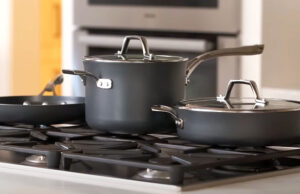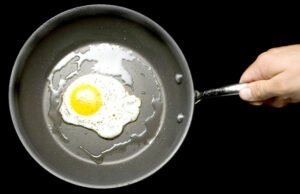As an Amazon Associate, I earn from qualifying purchases at no extra cost to you.
How Much Water Does a 1-Hour Dishwasher Cycle Use?
If you’ve ever wondered about how much water your dishwasher uses during its 1-hour cycle, you’re not alone. Many people have concerns about their water usage, especially when trying to conserve resources or cut down on their utility bills. The good news is, most modern dishwashers are designed to be efficient, but it’s helpful to understand exactly how much water is used and what factors influence this.
In this article, we’ll break down everything you need to know about dishwasher water consumption. From how much water is used during a typical 1-hour cycle to tips for reducing water usage, we’ve got you covered.
How Much Water Does a Dishwasher Use During a 1-Hour Cycle?
When it comes to dishwashers, water usage can vary depending on several factors, such as the model, cycle selected, and even the water pressure in your home. On average, a dishwasher uses about 3 to 5 gallons (11 to 19 liters) of water during a 1-hour cycle. While that may sound like a lot, keep in mind that this is significantly more efficient than washing dishes by hand.
Here’s how a dishwasher uses water during its cycle:
- Pre-rinse: The dishwasher starts by spraying water over the dirty dishes to loosen up food debris.
- Main wash: The main wash phase uses water at a higher temperature to clean the dishes thoroughly. This is when the most water is consumed.
- Rinse: After the washing phase, the dishes are rinsed multiple times with clean water to remove any remaining soap or food particles.
- Drying: Some dishwashers use a small amount of water to help dry the dishes, especially those with steam drying features.
While the amount of water used can vary based on factors like the cycle type (e.g., heavy wash, quick wash, eco-mode), most dishwashers are designed to minimize water use while still delivering effective cleaning.
Factors That Affect Water Usage in Dishwashers
The amount of water your dishwasher uses depends on a variety of factors. Understanding these can help you better manage water consumption in your home.
1. Type of Dishwasher
Not all dishwashers are the same. Newer models, especially those labeled as energy-efficient, tend to use less water than older models. For example, Energy Star-rated dishwashers are designed to use only about 3 gallons (11 liters) of water per cycle, which is much lower than older machines that can use up to 6 gallons (23 liters).
Dishwashers come in different types, and their design can impact water usage:
- Built-in dishwashers: These are the standard models installed under your kitchen counter. They are typically more efficient and use less water than older portable versions.
- Portable dishwashers: These dishwashers are less common today, but they often use more water compared to built-in models.
- Compact dishwashers: These are smaller in size and often use less water, making them ideal for people with smaller households.
2. Wash Cycle Settings
The cycle you choose on your dishwasher can also influence the amount of water used. Dishwashers come with various settings like:
- Quick wash: This cycle uses less water and is faster, but may not clean dishes as thoroughly as longer cycles.
- Heavy wash: This cycle uses more water, but it’s ideal for heavily soiled dishes.
- Eco mode: If you’re looking to save water, eco-mode is a good choice. It uses less water and energy but may take a little longer to complete.
Each of these cycles will use a different amount of water, so it’s important to select the right one based on your needs.
3. Water Temperature
The water temperature can also play a role in the overall water usage. Dishwashers typically use hot water for washing, which helps break down grease and food particles. The higher the temperature, the more water is used, as the dishwasher needs to fill up with water at the right temperature for the cleaning process. Most dishwashers heat the water during the cycle, but some models have built-in water heaters that make the process more efficient.
4. Dish Load Size and Arrangement
The number of dishes you load into the dishwasher and how you arrange them can affect water usage. Overloading your dishwasher can result in a less effective wash and may require additional water to clean the dishes properly. On the other hand, running the dishwasher with only a few items can lead to wasted water since the cycle will use nearly the same amount of water regardless of the load size.
To save water, make sure to load your dishwasher correctly, ensuring that each dish has enough space for the water to circulate properly. Avoid overloading, as it can hinder the cleaning process.
5. Dishwasher Features
Modern dishwashers come with a variety of features designed to optimize water and energy use. Some common features that help reduce water usage include:
- Sensor-based washing: Dishwashers with sensors can detect how dirty the dishes are and adjust the water usage accordingly.
- Half-load option: This feature allows you to run a smaller load, which uses less water compared to a full cycle.
- Air drying: Instead of using additional water for drying, some dishwashers use air-drying systems that don’t require extra water.
These features can help you cut down on the amount of water your dishwasher uses, making them more efficient in the long run.
How Does Dishwasher Water Usage Compare to Washing by Hand?
You may be surprised to learn that using a dishwasher can actually use less water than washing dishes by hand, especially if you’re not careful with the water running in your sink. Let’s compare both methods:
Washing by Hand
When washing dishes by hand, the water usage depends entirely on your habits. For example, leaving the tap running while scrubbing your dishes can waste a lot of water, and it can be difficult to estimate how much you’re using. On average, washing dishes by hand can use anywhere from 10 to 20 gallons (38 to 76 liters) of water.
Dishwasher Use
On the other hand, a modern dishwasher typically uses between 3 and 5 gallons (11 to 19 liters) of water per cycle. As mentioned earlier, this depends on factors like the cycle selected and the dishwasher model, but it’s generally much more efficient than washing by hand.
Why a Dishwasher Is More Water-Efficient
Dishwashers use a set amount of water, and they’re designed to be as efficient as possible. Water is sprayed directly onto the dishes with high pressure, ensuring that each dish gets clean with minimal water usage. Plus, most dishwashers recirculate water, so it’s reused during the wash and rinse stages.
While washing by hand, it’s easy to waste water by letting the faucet run. Even if you fill up a sink or basin, it’s still hard to control the exact amount of water used.
Tips for Reducing Water Usage with Your Dishwasher
Even though dishwashers are more efficient than hand washing, there are still ways to cut down on water usage even further. Here are some tips to help you save both water and energy:
Choose the eco-mode cycle: Most modern dishwashers come with an eco-mode that uses less water. Opt for this setting to save water while still cleaning your dishes effectively.
Avoid pre-rinsing: Many dishwashers don’t require you to pre-rinse dishes, and in fact, rinsing can waste water. Simply scrape off large food particles before loading them into the dishwasher.
Wash full loads: To maximize efficiency, run the dishwasher only when it’s full. This way, you’ll use the same amount of water for a larger load of dishes.
Maintain your dishwasher: Regularly clean and maintain your dishwasher to ensure it operates at peak efficiency. A clogged filter or dirty spray arms can cause it to use more water.
By following these tips, you can get the most out of your dishwasher while conserving water.
I hope this article helped you understand how much water a 1-hour dishwasher cycle uses. With the right dishwasher and the right settings, you can save water while still getting your dishes clean. So, the next time you run your dishwasher, remember that it’s actually more efficient than washing by hand. Just keep these tips in mind, and you’ll be doing your part to conserve water and reduce your environmental impact.
Frequently Asked Questions
Is it better to wash dishes by hand or use a dishwasher?
Using a dishwasher is usually more water-efficient than washing dishes by hand, especially if you use it correctly and run it with a full load.
Can a dishwasher use less water than a sink?
Yes, a modern dishwasher uses much less water than washing dishes by hand in a sink, especially if you avoid letting the water run while scrubbing.
Do I need to pre-rinse dishes before putting them in the dishwasher?
Most dishwashers don’t require pre-rinsing. Scrape off large food particles, but it’s better to avoid rinsing as it wastes water.
Is it safe to use a dishwasher every day?
Yes, it’s completely safe to use a dishwasher daily as long as you maintain it properly. Regular use won’t harm the appliance and can help conserve water.
Can I reduce water use by using eco-mode on my dishwasher?
Yes, eco-mode reduces water and energy usage by adjusting the cycle length and temperature, making it an ideal choice for conserving resources.
Is it true that dishwashers use more energy than hand washing?
Dishwashers generally use less energy and water than washing dishes by hand, especially when run with a full load on energy-efficient settings.
Do I save more water if I wash fewer dishes at once?
Yes, running a dishwasher with a smaller load can waste water, as the same amount of water is used regardless of how many dishes are inside.
Is it better to wash large or small items first in the dishwasher?
It’s best to place larger items like pots and pans on the bottom rack and smaller items on the top rack. This ensures better water circulation and cleaning efficiency.




